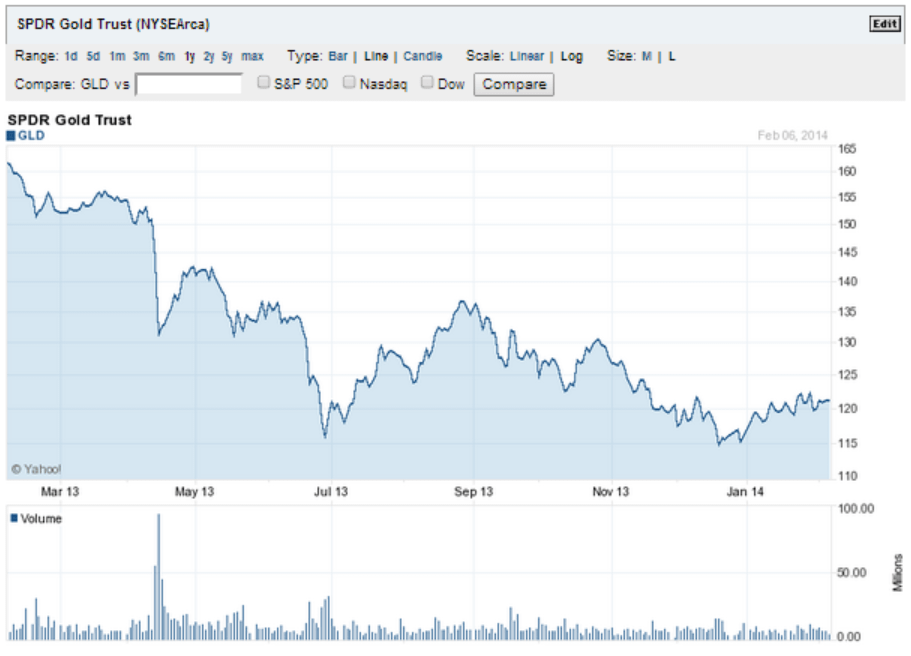By: Richard Cox
After the massive price declines we have seen in precious metals over the last 12 months, it will be critical for commodities investors to watch the ways the broader market reacts to short term economic data. The latest example of this can be found in the reaction seen after the January Non-Farm Payrolls report out of the US, as a disappointing numbers forced investors to seek out a store of value that acts as a safe haven alternative to stocks. As is often the case, the first choice here was gold -- and the real question is whether or not these events mark a sign of things to come.
“The January Non-Farm Payrolls report showed that 113,000 new jobs were created for the month,” said Tony Davis of AtlantaGoldandCoin. “This result was a large drop-off from the 180,000 that was expected by most of the market.” Once the figures were released, assets like the SPDR Gold Trust ETF (GLD) rallied, and futures markets in the commodities space closed the week roughly 2% higher. This is the best performance in about a month and this ultimately shows that markets are ready to start moving back into gold if we see economic reports that diverge from the initial projections put forward by central banks.
Implications for Stimulus Programs
For the last two years, the driving force in financial markets has stemmed from the market’s response to potential changes in stimulus programs. This month’s employment figures included a drop in the unemployment rate -- 6.6% for January. This is the lowest level we have seen since the initial phases of the 2008 financial crisis, and only one tick away from the 6.5% target that has previously been established by the Federal Reserve. We could easily see the 6.5% unemployment target next month, and it will be very interesting to see how traders react once the Fed is forced to “put its money where its mouth is” and act on its initial statements. Will we see drastic reductions in US stimulus programs? It’s not out of the realm of possibility.
Chart Perspective
For traders with exposure to the SPDR Gold Trust ETF, it is important to look at the long-term trends. 2013 was a bloodbath for those invested in gold and its related assets. Most of these investors hung-on through the entire experience, and they are just hoping at this point that prices start to reverse back into positive territory. There is good reason to believe that this will begin to occur, however, as prices have stabilized after creating a double bottom in the 115 area. Longer term trend lines have been broken at this stage and this does suggest that bias and sentiment has shifted. The clear break of 1270 in gold futures confirms this bias. In GLD, this equates to the psychological barrier at 125.
Stocks, the Dollar, or Gold?
Given all of these factors, investors have a big choice on their hands: Where do I put my money? At this stage, there is no easy answer and we are at an inflection point. Medium-term traders have limited possibilities. Gold appears to have good upside potential given the fact that historical supply at 1270 has not rejected prices. Historical tops do not have a strong tendency to hold on multiple tests. We are seeing favorable reactions after negative economic data and the broader trends in US employment figures suggest continued weakness into the second quarter.
This means that it’s time to buy gold when economic data disappoints, and sell when its better than expected. Recent trends in US labor markets suggest that we are in for a period of weakness, and that the total number of jobs created on a monthly basis will be weak in coming reports. If this occurs, be ready to buy gold.

